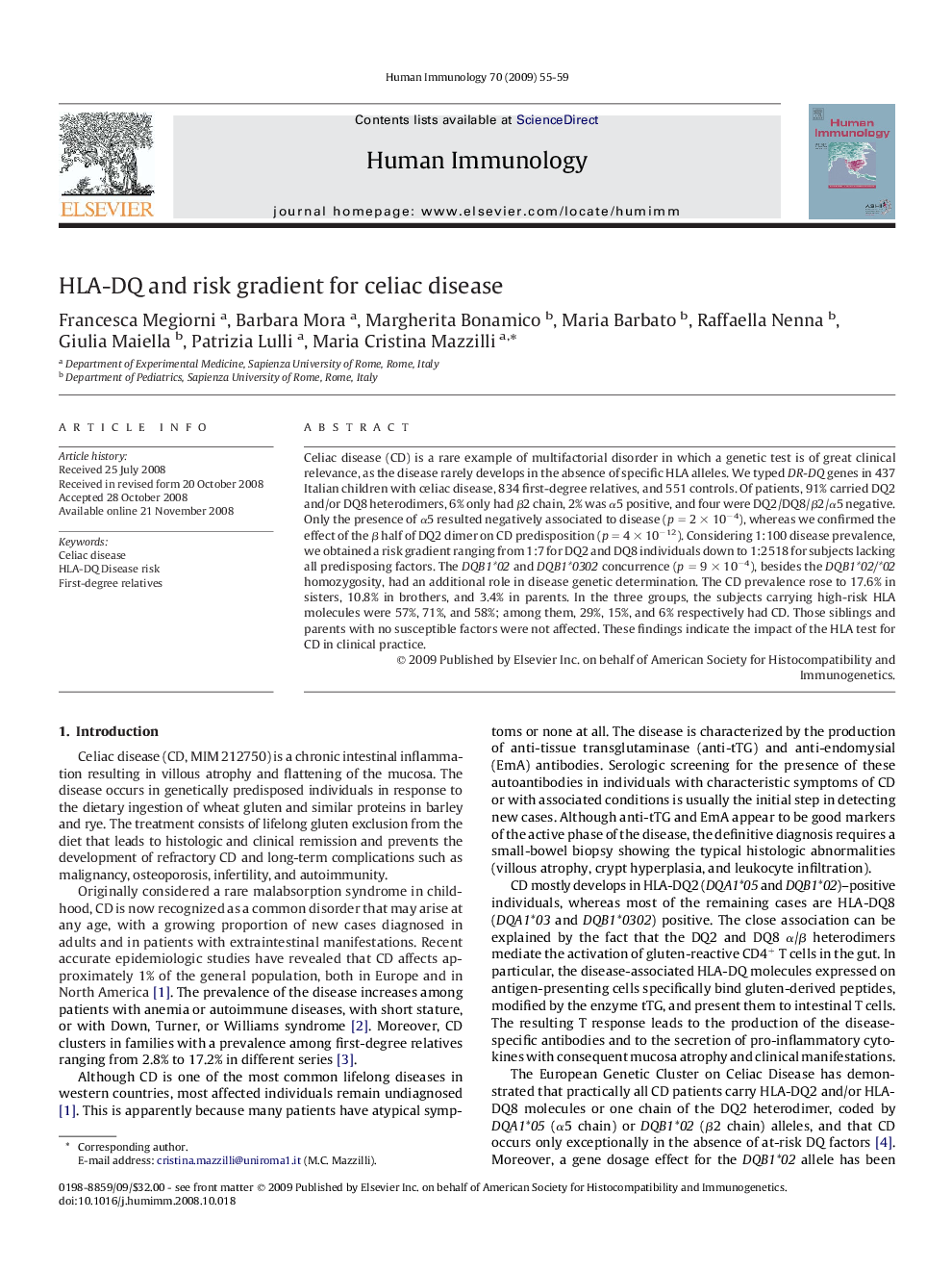| Article ID | Journal | Published Year | Pages | File Type |
|---|---|---|---|---|
| 3351790 | Human Immunology | 2009 | 5 Pages |
Celiac disease (CD) is a rare example of multifactorial disorder in which a genetic test is of great clinical relevance, as the disease rarely develops in the absence of specific HLA alleles. We typed DR-DQ genes in 437 Italian children with celiac disease, 834 first-degree relatives, and 551 controls. Of patients, 91% carried DQ2 and/or DQ8 heterodimers, 6% only had β2 chain, 2% was α5 positive, and four were DQ2/DQ8/β2/α5 negative. Only the presence of α5 resulted negatively associated to disease (p = 2 × 10−4), whereas we confirmed the effect of the β half of DQ2 dimer on CD predisposition (p = 4 × 10−12). Considering 1:100 disease prevalence, we obtained a risk gradient ranging from 1:7 for DQ2 and DQ8 individuals down to 1:2518 for subjects lacking all predisposing factors. The DQB1*02 and DQB1*0302 concurrence (p = 9 × 10−4), besides the DQB1*02/*02 homozygosity, had an additional role in disease genetic determination. The CD prevalence rose to 17.6% in sisters, 10.8% in brothers, and 3.4% in parents. In the three groups, the subjects carrying high-risk HLA molecules were 57%, 71%, and 58%; among them, 29%, 15%, and 6% respectively had CD. Those siblings and parents with no susceptible factors were not affected. These findings indicate the impact of the HLA test for CD in clinical practice.
